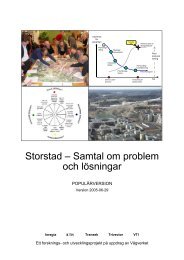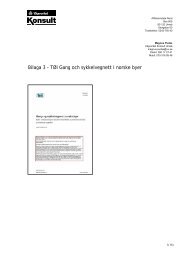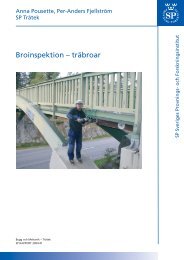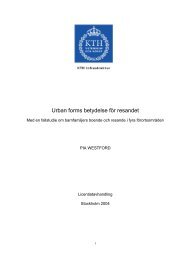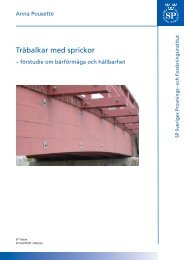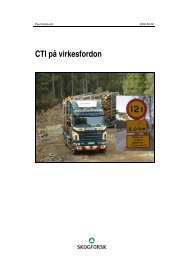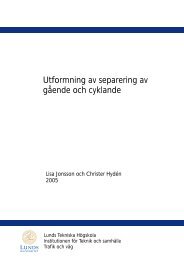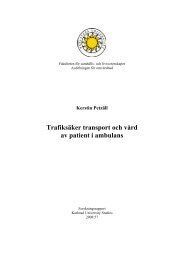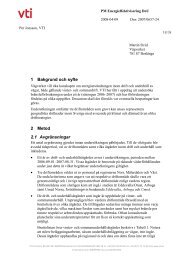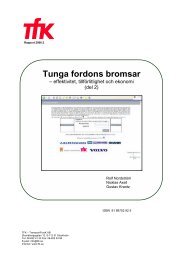Är trängselskatt ett hot mot detaljhandeln
Är trängselskatt ett hot mot detaljhandeln
Är trängselskatt ett hot mot detaljhandeln
You also want an ePaper? Increase the reach of your titles
YUMPU automatically turns print PDFs into web optimized ePapers that Google loves.
time of purchase and finally changing destination for purchase. On the other hand there were<br />
income effects, i.e. the level of consumption for services and goods decreasing for individuals<br />
or households that paid congestion charge. If substitution effects were significant it was<br />
presumed to show a clear change in turnover for retail trade within the congestion charge zone<br />
in comparison to retail trade outside the zone and average national figures at the time of the<br />
trial period. If income effects were significant it was presumed to be shown through a slower<br />
development of retail trade in the zone compared to a national average.<br />
The size of income effects and its effect on total disposable income and the turnover of retail<br />
in the Stockholm area were examined by calculating the size of the part of the congestion<br />
charge coming from households´ disposable income. The Stockholm trial generated SEK 230<br />
million from households which corresponds to one per mille of the disposable income in the<br />
Stockholm area. The retail trade in the same area had an approximate SEK 60 billion turnover<br />
during the trial period. Households spend approximately 35 percent of disposable income on<br />
retail purchases. This means that approximately SEK 75 million of the households disposable<br />
income was spent on some kind of retail trade. The impact of income effect on retail trade is<br />
therefore estimated to 0,13 percent. In both cases the income effect appears to be of no<br />
importance for the development of retail trade in the Stockholm area.<br />
The study of development of retail turnover was executed both as a descriptive analysis and as<br />
an econometric analysis. The descriptive analysis showed that the retail trade in Stockholm<br />
experienced a lower development than national average in 2006. This mainly relates to a low<br />
development of the retail trade within the congestion charge zone. The low development of<br />
the grocery sector within the zone is due to its small scale and the fact that consumers use<br />
these for complementary purchases while the hypermarkets outside town are used for larger<br />
purchases. The weak development of durables in the central area of Stockholm was mainly a<br />
result of the change of structure that retail trade in the area is undergoing. This structure<br />
change means that department stores and shopping centres are the winners while small free-<br />
standing shops for a long period of time have been loosing market shares. The study neither<br />
examined the development of single department stores, shopping centres or small free-<br />
standing shops nor whether units located close to the congestion charge zone were more<br />
affected than units located more centrally.<br />
43




